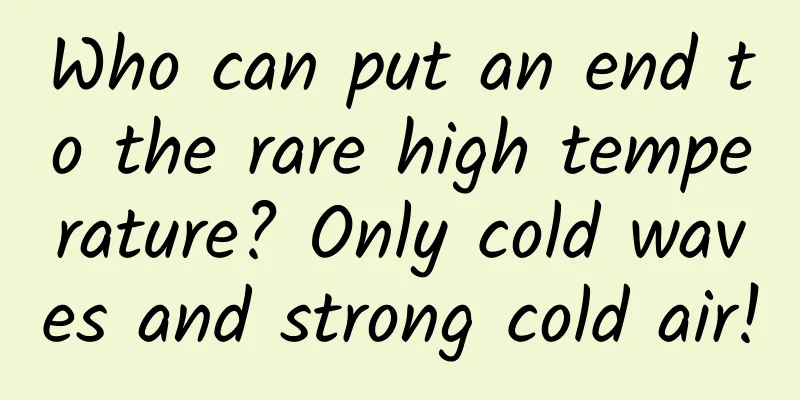This "treasure" on the grassland really looks like the "Bull Demon King"!

|
On the roof of the world, the Qinghai-Tibet Plateau, there lives a tenacious and magical animal known as the "ship of the plateau". Yaks (Bos mutus) are a mammal belonging to the Bovidae family and are livestock unique to the Qinghai-Tibet Plateau. They have not only adapted to the extremely harsh natural environment, but have also become an indispensable part of the lives of the Tibetan people. 1. Appearance and characteristics of yaks Yaks are strong, with broad backs and short, thick limbs. Males are usually larger than females. They have thick hair, especially on the neck, chest and abdomen, which helps to protect against the cold. Yaks have large, round eyes, thick nostrils, and large, soft ears to help prevent cold winds from entering the ear canals. The tail is relatively short to reduce heat loss. In addition, the hooves of yaks are relatively round, which helps them walk on grasslands or rough terrain. Yaks come in a variety of colors, including black, white, and black and white. The white yaks have fur that looks like winter snow, while the black yaks have no hair at all, so black that even the eyes can't be distinguished. Their horns are thick and curved, extending outward and bending backwards. They are not only a defensive weapon, but are also used to make handicrafts. 2. Yak’s living habits Yaks live in high-altitude grasslands, meadows and swamps, ranging from 3,500 meters to more than 6,000 meters above sea level. They mainly feed on grass, choose high-altitude plants suitable for plateau growth, and feed during the day. Yaks have excellent adaptability and can survive in natural conditions of severe cold, lack of oxygen, and strong winds, and obtain food from the scarce plateau grasslands. Yaks usually live in small groups, led by an adult male, and consist of females and calves. They have strong defensive characteristics and will take collective actions to form a defensive formation when facing external threats. Yaks feed for a longer period of time in summer and eat less in winter to save energy. 3. Economic and cultural value of yaks The economic value of yaks is extremely high, and their meat, skin, hair, and milk can all be used. Yak meat is delicious and nutritious, and is known as the "crown of beef cattle". It is rich in high protein, amino acids, carotene, calcium, phosphorus and other trace elements, low in fat and high in calories, and has a significant effect on enhancing human disease resistance, cell vitality and organ function. Yak skin is thick, wear-resistant and durable, and is a good material for making leather products. Yak hair can be made into clothes or tents, which is an important material for herders to keep warm in winter and make tents. In addition, yak bones are also an important source of medicinal materials and are used to make various Chinese medicinal materials. In Tibetan culture, yaks have a profound meaning. The Tibetan people cannot live without yaks in their daily lives, and they are regarded as a symbol of good luck. Yak skulls are often hung at the door to protect the safety of the house. Yaks are ubiquitous in Tibetan folk songs, legends, stories, paintings, and installations, and have become an important part of Tibetan culture. 4. Protection of Yaks Wild yaks are a first-class protected animal in China and are a species unique to the Qinghai-Tibet Plateau. They live in alpine meadows at an altitude of 3,000-6,000 meters, distributed in southern Xinjiang, Qinghai, Tibet, northwestern Gansu, and western Sichuan. Due to human hunting and habitat destruction, the number of wild yaks once dropped sharply, but in recent years, with the implementation of protection policies, the number of wild yaks has gradually recovered. Yaks, this magical animal living on the roof of the world, not only conquers the extremely harsh natural environment with its tenacity and adaptability, but also brings rich material wealth and spiritual sustenance to the Tibetan people with its precious characteristics. It is the boat of the plateau, the treasure of the plateau, and even the soul of the plateau. Let us work together to protect these precious creatures and let them continue to write their own legends on the Qinghai-Tibet Plateau. First review: Li Chao Review: Liu Qiang Final judge: Li Jiao |
<<: Magic from pixels! How does super-resolution technology make blurry pictures look brand new?
>>: The first dynasty in the northern frontier, Lai Liao!
Recommend
How do cash loan products promote and acquire customers?
What is a cash loan? At present, the definition o...
Layoffs for the winter, will you be one of the 20% who are laid off at the end of the year?
[[153798]] Within 48 hours, Alibaba reduced its c...
Where will the dispute between Zhu Jianghong and Dong Mingzhu lead Gree?
There are many good horses, but the competition b...
Apple is also messing around. Why is the iPhone 6 32GB a bad move?
Earlier this week, without any official publicity,...
Can eating rice like this help you lose weight? Are you tempted?
I heard that cooling down cooked rice, steamed bu...
The latest policy on new energy vehicle subsidies in 2022: How much does one cost? Where to pick it up?
New energy vehicles are a major trend in the devel...
How can educational and training institutions build a closed-loop online private domain marketing ecosystem in 2021?
With the continuous development and progress of s...
Japanese and Korean batteries return to China, domestic supply chain companies may usher in a new round of opportunities
Japanese and Korean power battery giants have beg...
Attention! This is how to use mobile phone power bank safely
Are you anxious when your phone battery is low? W...
Blind review of Xiaomi 8 and OnePlus 6 photo effects comparison, did you guess it right?
The official said that Xiaomi 8 has the best came...
They thought they understood the market, but it turned out that they could hardly sell 4,000 units a month. iCAR 03 is another product that Chery made on a whim.
There are more and more square box models. Mainst...
World Day to Combat Desertification and Drought丨To combat desertification, please start with these little things
June 17 World Day to Combat Desertification and D...
United Nations Environment Programme: Carbon Gap Report 2021
As climate change intensifies, scientists warn th...
Tips for event planning and promotion!
When it comes to event planning , many people thi...
State Power Investment Corporation: Compilation of key policies for the hydrogen energy industry in 2021
The PDF version will be shared on 199IT Knowledge...









